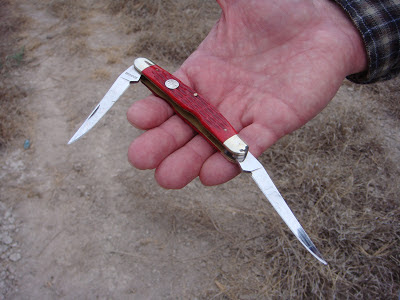The ideal prehistoric plant food provided three essentials. First, the food needed to be available even
during periods of drought. Second, humans
needed a plant that was multifaceted having various edible parts. Third, it should exist in abundance so that
humans facing other stresses would not fear the loss of that particular staple
crop. The indigenous peoples of the
Southwest and other desert or semi-desert regions southward relied on a plant
that provided all three requirements. In
fact, the nopal or prickly pear cactus (Opuntia
sp.) was such an ideal plant food that overtime aspects of prehistoric
cultures steered their myths and rituals towards ensuring abundant harvests. After all, it was the prickly pear cactus that
could sate the belly and mollify the mind.
The ripened fruit or tunas
were edible as were the young pads called nopalitos. And the juices from the nopal were fermented
to produce a potent alcoholic drink. (Note:
The term nopalito is the diminutive
form of the word nopal.)
South Texas prehistoric groups and bands relied heavily on
the nopal because even when tuna and nopalitos were unavailable the thicker
pads, though not as succulent, could be mashed, cooked and eaten thus averting
starvation.
Read some of the anthropological literature related to South
Texas and you might think the Indians that lived in this region ceased to exist
long ago. Nothing could be further from the
truth. As equally fallacious is the
suggestion that their cultures were completely eliminated by the Spanish. In fact, the descendants of those Indian
groups live in South Texas today.
Erroneously referred to as “Hispanics” or “Latinos” these Native
Americans have preserved many aspects of their former cultures. Though their original names and languages
have long been forgotten (This is perhaps the true story of lost roots.) the
Native Americans of South Texas are still closely tied to many of their
prehistoric food sources and they hold to myths and other beliefs ensconced in
ideations developed thousands of years ago.
Like many other aspects of Native American culture and foods,
nopalitos transcend the people who
discovered them. Like corn, potatoes,
tobacco and chile piquin (Capsicum annuum)
the nopal is now enjoyed throughout the country.
Deep South Texas has several nopal farms growing prickly pear
sold at local grocery stores. For many,
however, the experience with nopalitos is a bit more traditional. The first European settlers in the region,
for example, learned from the indigenous people in the same manner that the
Pilgrims learned from those living around them.
Thus harvesting nopalitos goes
back generations.
In former times people carried small pocket knives with the primary
function of harvesting the small prickly pear pads. These knives are generally known as “pen
pattern slipjoint” or folders. They
average about three inches in length and have two opposing blades.
Two well used nopalito knives from the J.R. Guerra collection. Note that the bottom knife is the prized
Kabar brand.
Most ardent nopalito harvesters swear by these little
knives. They are perhaps the perfect
size for removing the tiny spines and ephemeral leaves of nopalitos. The knives small
size make them easy to carry and thus always available.
Schrade Old Timer pen pattern knife I purchased in the early
1970s. Carbon steel blades on this knife
and the two knives pictured above produced razor sharp edges.
Another knife suitable for nopalitos is the muskrat pattern slipjoint. I’ve used these knives as well but they are
not as popular as the pen pattern.







Great post! I loved to gather my own nopalitos when I lived in Oro Vally, AZ. I used a little 3 blade German knife my grandfather owned. It was carbon steel blades and razor sharp.
ReplyDeleteI included my grandmother's recipe in a post entitled: Nopalitos a la Lita.
Delete